Table of Contents
Rajasthan culture is a vivid and rich blend of traditions, art, music, and lifestyle unique to the Rajasthan state in northwest India. It’s known for its vibrant festivals, colorful attire, and delicious food. In terms of lifestyle, the people of Rajasthan are known for their warm hospitality and deep-rooted customs. The “Rajasthan culture and lifestyle” is deeply influenced by its royal history and the various tribes that call it home.
When it comes to Rajasthan culture food and dress, the state offers a variety of spicy dishes like Dal Baati Churma and sweets like Ghevar. The traditional dress includes bright and colorful ghagras for women and turbans and dhotis for men.
Rajasthan culture in Hindi reflects the predominant language spoken in the region, which is also depicted in its literature, music, and movies. For those who want to dive deeper, there is a wealth of culture of Rajasthan PDF resources available online, offering detailed insights. The state’s rich heritage is also captured in Rajasthan culture photos and culture of Rajasthan essays, which often highlight the region’s architectural marvels, including forts and palaces.
Rajasthan tourism is significantly boosted by the state’s culture, drawing visitors to its historic sites, vibrant bazaars, and desert landscapes. The Rajasthan festivals like Diwali, Holi, and Pushkar Camel Fair are particularly famous, attracting tourists from across the world.
Rajasthan culture and tradition include various art forms like Kathputli (puppetry) and folk dances such as Ghoomar. These traditions are not only a source of entertainment but also a means to pass on stories and traditions from generation to generation. For educational purposes, there are Rajasthan culture projects and Rajasthan culture PPTs available, which are particularly useful for students and researchers interested in this region’s rich heritage.

History of Rajasthan
Rajasthan, located in northwest India, is a state renowned for its deep-rooted history and vibrant culture. Originating from a lineage of ancient civilizations and empires, Rajasthan, which translates to “Land of Kings,” has a legacy shaped by various rulers including the Rajputs, Mughals, and the British colonial period.
The Rajput era, in particular, had a profound impact on Rajasthan’s development. Known for their valor and chivalry, the Rajputs constructed numerous forts and palaces, many of which stand today as testaments to their architectural prowess. These structures, found in cities like Jaipur, Udaipur, and Jodhpur, are emblematic of Rajasthan’s historical significance.
Rajasthan’s culture is a vibrant tapestry, woven from its festivals, music, dance, and handicrafts. Its cuisine, characterized by unique flavors and dishes, reflects the region’s rich culinary heritage. The social life in Rajasthan is deeply influenced by its tribal communities, each contributing to the state’s diverse cultural landscape.
Languages and dialects in Rajasthan vary, adding to the state’s linguistic richness. The arts and crafts of the region, including textiles and jewelry, showcase the skill and creativity of its people. Rajasthan’s temple architecture and the majestic forts narrate the state’s spiritual and royal history.
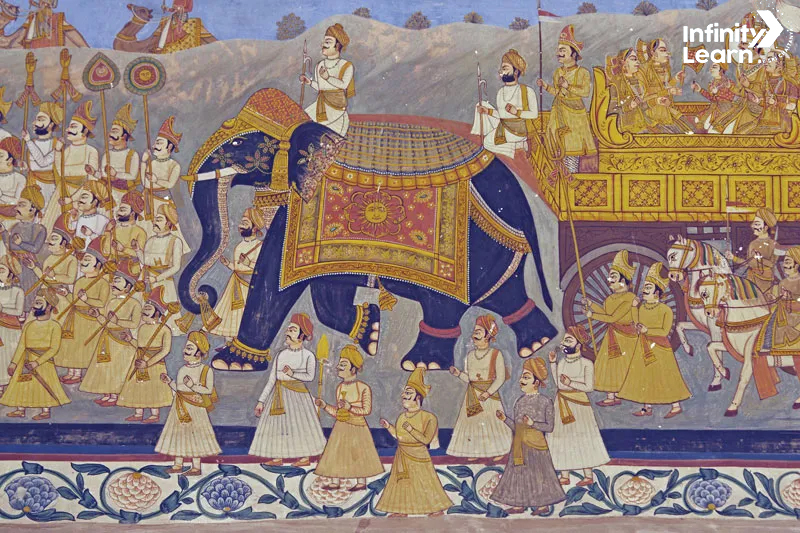
Festivals of Rajasthan
Festivals in Rajasthan are key to its culture and a big part of its tourism. The Pushkar Camel Fair is unique, famous for its camel trades and cultural activities. Diwali, the Festival of Lights, sees homes and streets lit up across the state.
Holi, the Festival of Colors, is celebrated with colored powders and water, music, and food. The Teej Festival in Jaipur marks the monsoon with processions and traditional performances. Jaisalmer’s Desert Festival showcases Rajasthan’s heritage with camel races and handicrafts.
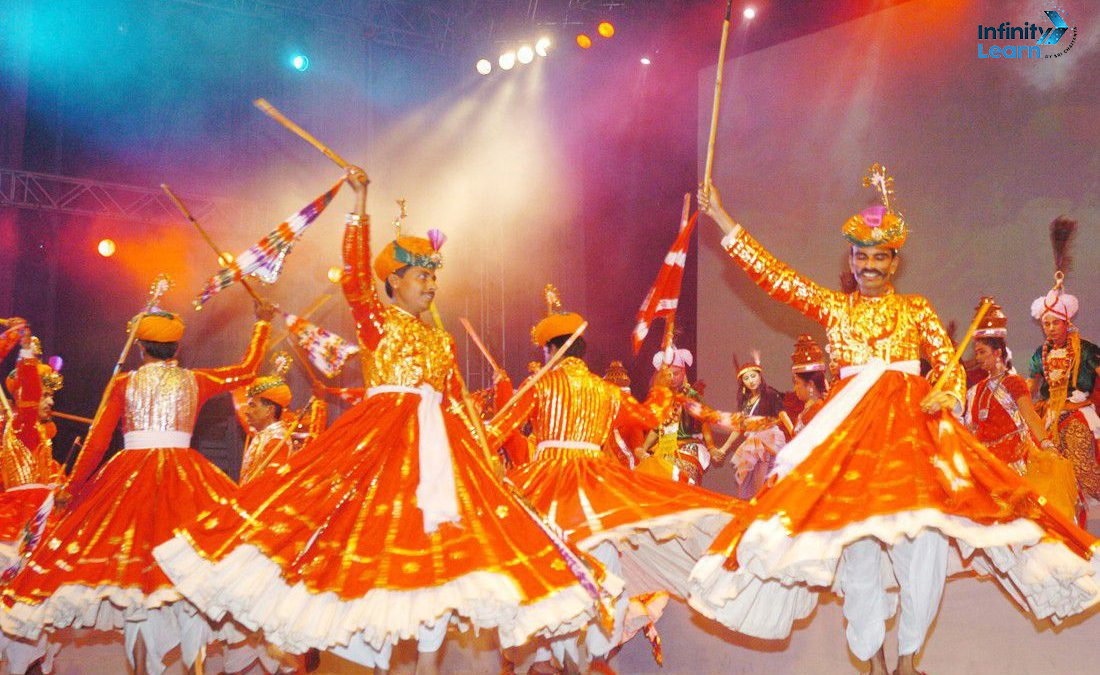
Rajasthan Languages and Dialects
Rajasthan Languages and Dialects” reflect the state’s diverse cultural heritage. The main language spoken here is Hindi, with a distinct Rajasthani flavor. Additionally, there are several local dialects like Marwari, Mewari, Dhundhari, and Harauti, each unique to different regions of Rajasthan. These languages and dialects are an integral part of the Rajasthan culture and lifestyle, adding to the state’s rich linguistic tapestry.
Major Languages People Speak in Rajasthan
- Hindi: The primary language spoken across Rajasthan, often with a local accent and terms.
- Rajasthani: A widely spoken local language, reflecting the state’s cultural identity.
- Marwari: Predominant in the Marwar region, known for its unique expressions.
- Mewari: Spoken mainly around Udaipur and surrounding areas.
- Dhundhari: Common in the Dhundhar region, including Jaipur.
- Harauti: Used in the Kota and Bundi areas of Rajasthan.
- Shekhawati: Spoken in the Shekhawati region, renowned for its rich folklore.
- Malvi: Found in the eastern parts of Rajasthan, bordering Madhya Pradesh.
Rajasthan Music and Dance
Rajasthan’s music and dance are essential parts of its culture, known for their energy and color. This is a big reason why people visit Rajasthan, as it adds to the unique Rajasthan culture and lifestyle.
The music in Rajasthan features instruments like the sarangi and dholak, creating melodies that reflect the region’s spirit. It often tells stories of Rajasthan’s history and legends, playing a key role in Rajasthan culture and tradition.
Rajasthani dances, like Ghoomar and Kalbelia, are famous. Ghoomar is a graceful dance by women, known for its swirling movements. Kalbelia, performed by the Kalbelia tribe, is lively and resembles the movements of a snake. These dances are more than just entertainment; they’re a celebration of life and a way to share stories.
During Rajasthan festivals, music and dance are everywhere, bringing people together. They are also a time for enjoying Rajasthan culture food.
Rajasthan culture photos often show these dances and music performances, giving a glimpse into this vibrant part of Rajasthani life. For those looking to learn more, culture of Rajasthan PDF files and Rajasthan culture PPTs offer detailed information.
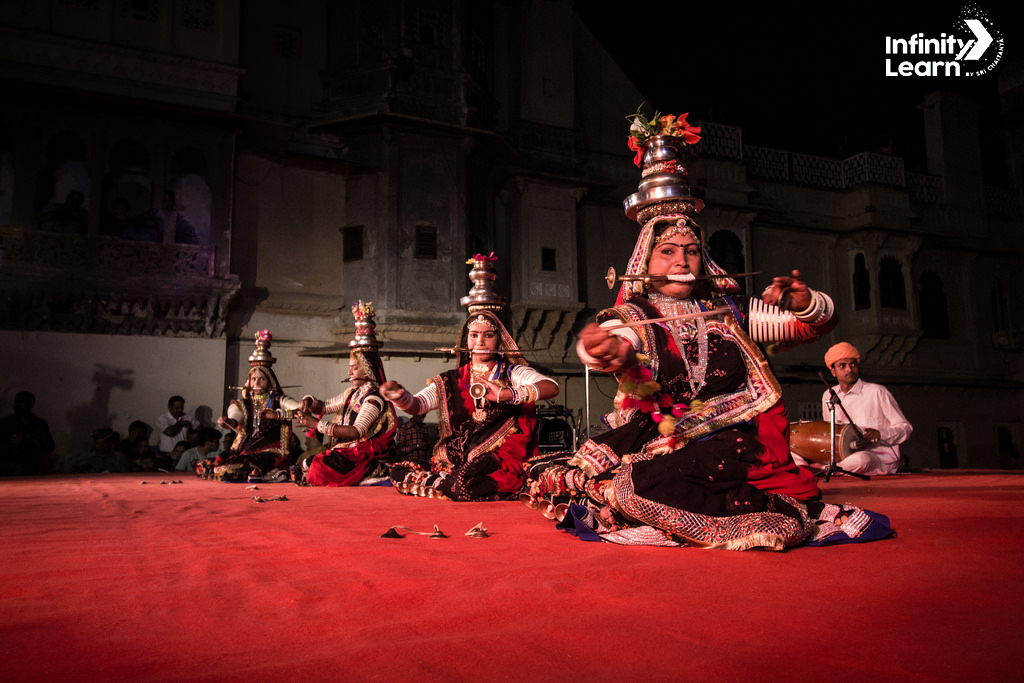
Rajasthan Cuisine
Rajasthan’s cuisine, known for bold flavors, is a key part of Rajasthan culture and lifestyle. The arid climate influences the food, with dishes often featuring beans, lentils, gram flour, and spices. “Dal Baati Churma” is a classic example, combining spicy lentils, baked wheat balls, and a sweet dessert. “Laal Maas,” a spicy red meat curry, and “Gatte ki Sabzi,” a gram flour dumpling curry, are other popular dishes.
Sweets like “Ghevar” and “Moong Dal Halwa” are favorites, especially during “Rajasthan festivals.” Snacks such as “Mirchi Bada” and “Pyaaz Kachori” are also widely enjoyed.
In Rajasthan culture tourism, trying these dishes is a highlight, often captured in Rajasthan culture photos. This cuisine reflects the state’s rich heritage and unique geography.
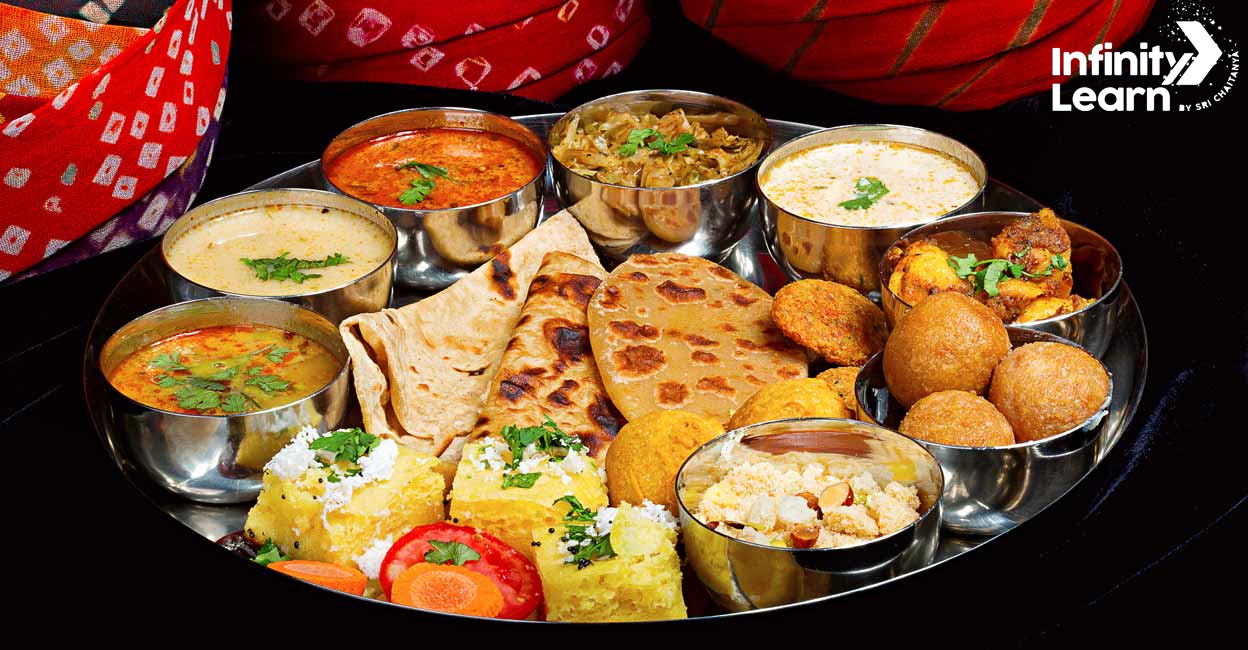
Rajasthani Traditional Dress
Rajasthani traditional dress is a vibrant part of Rajasthan culture and lifestyle. Women typically wear rajasthan culture dress which include a colorful ‘ghagra’ (long skirt), ‘choli’ (fitted top), and ‘odhni’ (headscarf), often adorned with mirror work and embroidery. Men’s rajasthan culture dress includes a ‘dhoti’ or ‘pajamas’ with a ‘kurta’ (long shirt), and a distinctive ‘pagari’ (turban), reflecting their community and region.
These dresses are especially prominent during “Rajasthan festivals,” showcasing the rich “Rajasthan culture and tradition.” The attire, with its vivid colors and unique styles, is a key part of Rajasthan’s cultural identity.
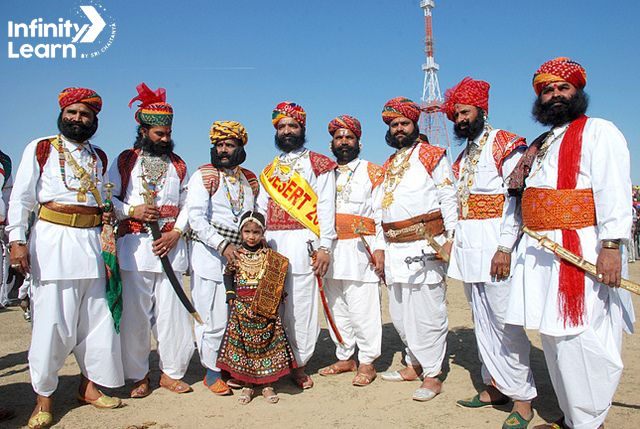
Kathputli: Rajasthan Puppetry
“Kathputli,” which means puppetry, is a traditional art form in Rajasthan, known for its unique storytelling and entertainment value. This form of puppetry is not just a performance art; it’s a significant part of Rajasthan culture and lifestyle.
Kathputli shows typically feature colorful, wooden puppets dressed in traditional Rajasthan culture dress. These puppets are skillfully controlled by puppeteers who use strings or wires. The stories told through Kathputli often reflect local myths, legends, and social issues, making it a mirror to Rajasthan culture and tradition.
This art form plays a vital role in Rajasthan culture tourism. Visitors to Rajasthan are often captivated by these puppet shows, which are a unique way to experience the local culture. Kathputli performances are not only popular in local fairs and festivals but have also gained attention in global cultural showcases.
Furthermore, Kathputli is a subject often featured in Rajasthan culture photos and documentaries, highlighting its importance in the state’s cultural heritage.
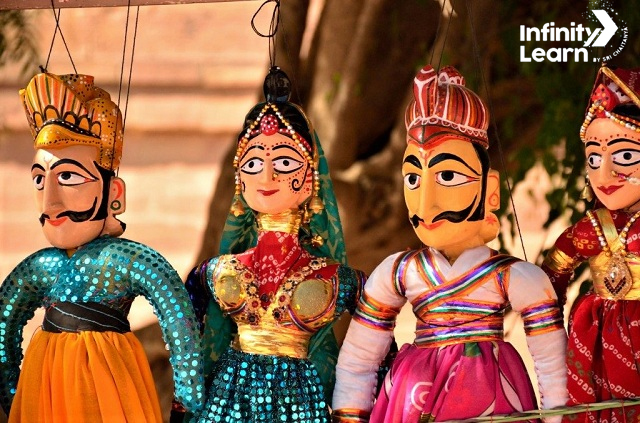
Rajasthan Architecture
Rajasthan’s architecture is a key part of its culture and a major draw for tourism. The state’s forts, like Amer Fort in Jaipur and Mehrangarh Fort in Jodhpur, showcase Rajput design and history.
Its palaces, such as Udaipur’s Lake Palace and Jaipur’s City Palace, are known for their grandeur and art. Rajasthan’s temples, like the Dilwara Temples and Pushkar’s Brahma Temple, reflect spiritual and architectural beauty.
The stepwells, including Chand Baori, highlight ancient water conservation. Overall, Rajasthan’s architecture is a blend of history, art, and culture, essential to Rajasthan culture and tradition.
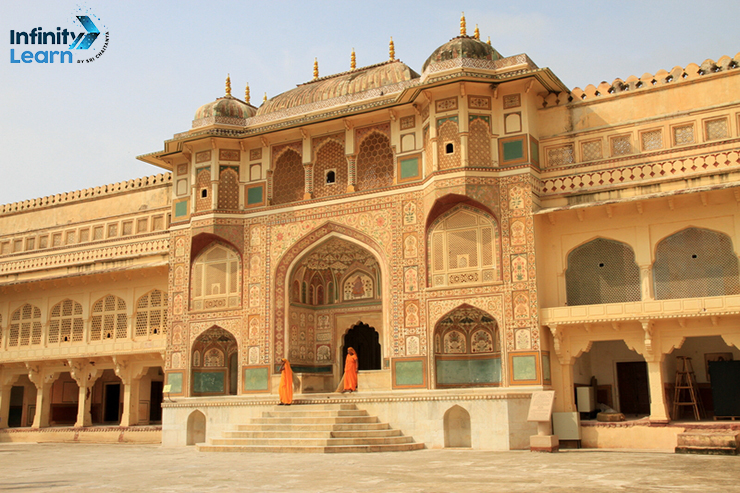
Forts of Rajasthan
Forts of Rajasthan” refers to the numerous historic fortresses located throughout the Rajasthan.
These forts are renowned for their architectural grandeur and historical significance, playing a crucial role in the region’s defense and history.
Built mainly by the Rajput rulers, these forts are situated in strategic locations, often on hilltops, to provide a vantage point against invaders. Each fort has its unique architectural style, with intricate designs, massive gates, courtyards, and often, elaborate palaces within the premises.
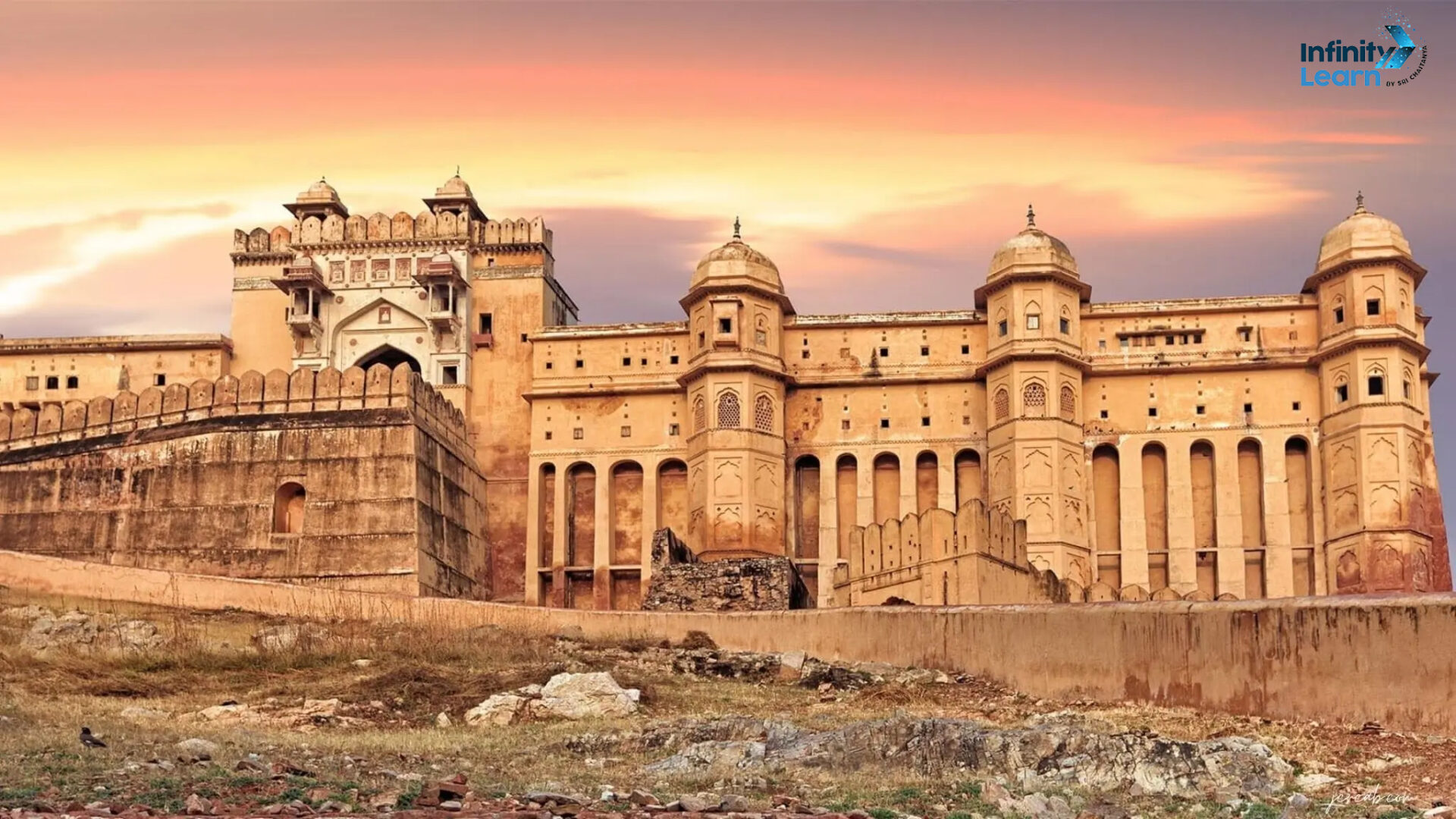
Some of the most famous forts include:
- Amer Fort in Jaipur, known for its artistic Hindu elements.
- Mehrangarh Fort in Jodhpur, one of the largest forts in India.
- Chittorgarh Fort, the largest in India, steeped in tales of bravery and battles.
- Jaisalmer Fort, also known as Sonar Qila, notable for its golden limestone walls.
- Kumbhalgarh Fort, famous for its long defensive wall.
- Ranthambore Fort, known for its proximity to the Ranthambore National Park.
Social Life in Rajasthan
Social life in Rajasthan is a vibrant mix of tradition and community. Families here often live together in large groups, creating strong bonds. This aspect is a big part of the Rajasthan culture and lifestyle.
Festivals are central to life in Rajasthan, bringing everyone together. These events, filled with music, dance, and Rajasthan culture food, showcase the state’s rich traditions and are a highlight of “Rajasthan tourism.”
In villages, community life is strong, with people involved in agriculture and crafts, essential parts of Rajasthan culture and tradition. In cities like Jaipur and Udaipur, while life is more modern, it still holds onto the unique Rajasthani essence.
Overall, Rajasthan’s social life is a blend of old and new, deeply rooted in family and community values.
Religion in Rajasthan
Religion in Rajasthan is diverse, with Hinduism being the most prominent. Numerous temples across the state reflect the deep-rooted Rajasthan culture and tradition.
Islam is also significant in Rajasthan, with notable mosques and Islamic shrines like Ajmer Sharif Dargah. Jainism is important too, with famous Jain temples like the Dilwara Temples at Mount Abu.
Other religions like Sikhism and Christianity exist in smaller communities. Religious festivals are celebrated with enthusiasm, important for Rajasthan culture and lifestyle and attracting Rajasthan tourism.
Overall, Rajasthan’s religious scene is a mix of Hinduism, Islam, Jainism, and other faiths, contributing to the state’s cultural richness.
Rajasthan Palaces
Rajasthan Palaces” are grand structures that showcase the royal heritage and architectural brilliance of Rajasthan, a key aspect of Rajasthan culture and lifestyle. These palaces are not just tourist attractions but also a significant part of Rajasthan culture and tradition.
Some of the most famous palaces in Rajasthan include:
- City Palace, Jaipur: A magnificent palace complex that includes the Chandra Mahal and Mubarak Mahal.
- Lake Palace, Udaipur: Situated in the middle of Lake Pichola, this palace is a marvel of architecture.
- Umaid Bhawan Palace, Jodhpur: Known for its blend of Indian and European architectural styles.
- Hawa Mahal, Jaipur: Famous for its unique five-story exterior, resembling a honeycomb.
- Rambagh Palace, Jaipur: Once a residence of the Maharaja of Jaipur, now a luxury hotel.
- Jal Mahal, Jaipur: A palace in the middle of the Man Sagar Lake, known for its serene beauty.
These palaces, with their intricate designs and historical significance, play a vital role in “Rajasthan tourism,” attracting visitors keen to experience the opulence and history of Rajasthani royalty. They are not just buildings but symbols of Rajasthan’s rich cultural past.
Rajasthani Arts and Crafts
Rajasthani arts and crafts are key to Rajasthan culture and lifestyle. Famous for their colors and intricacy, they show the state’s rich history and traditions.
Textiles are a highlight, with block printing, tie-dye, and embroidery. Rajasthani jewelry, especially in silver, reflects its royal past. Pottery, like the blue pottery from Jaipur, is known for its unique style. Wooden furniture and crafts from Shekhawati and Kishangarh are admired for their detailed art.
Miniature paintings, with fine details and vibrant colors, depict historical and mythological scenes. Puppetry, particularly Kathputli shows, is a unique Rajasthan art form, telling traditional stories.
These crafts are not just culturally important but also boost “Rajasthan tourism,” attracting visitors to explore and purchase local handicrafts, embodying Rajasthan’s artistic heritage.
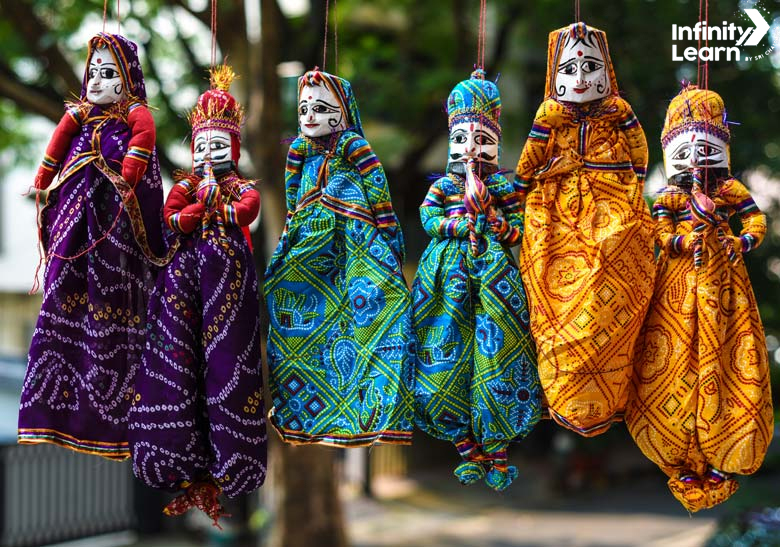
Tribes of Rajasthan
The “Tribes of Rajasthan” are diverse ethnic groups, each with unique customs and traditions that enrich the Rajasthan culture and lifestyle. Major tribes include Bhils, Minas, These tribes contribute to the colorful mosaic of Rajasthan culture and tradition, playing a vital role in the state’s heritage and identity.
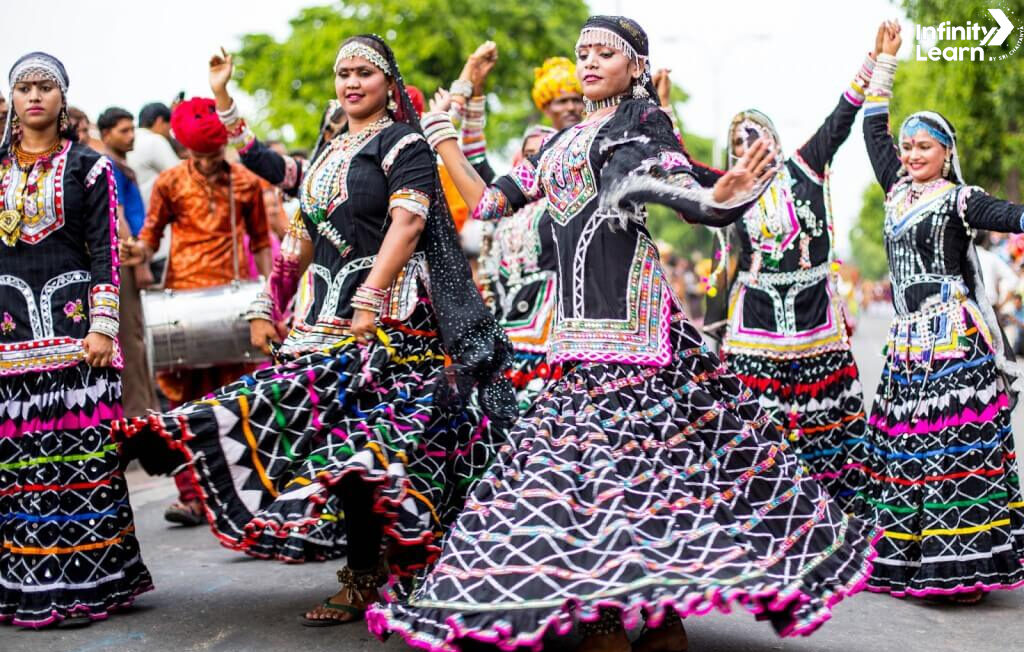
Key Tribes:
- Bhils: Known as the largest tribe in Rajasthan, they have a rich cultural heritage and are renowned for their archery skills.
- Minas: Historically considered warriors and guardians of Rajasthan’s forts.
- Banjaras: Noted for their nomadic lifestyle, colorful attire, and vibrant dances.
- Gadiya Lohars: Famed for their iron-smith skills and traditional way of life on the move.
FAQs on Rajasthan Culture
What is the main culture of Rajasthan?
The main culture of Rajasthan is characterized by rich traditions, vibrant arts, and historical heritage. It includes colorful festivals, traditional music and dance, and unique handicrafts.
Why Rajasthan has rich culture?
Rajasthan has a rich culture due to its historical legacy of Rajput and Mughal rule, diverse communities, and its geographical location, which have all contributed to its unique cultural tapestry.
What are the colors of Rajasthan culture?
The colors of Rajasthan culture are bright and vibrant, reflecting in its traditional attire like ghagras and turbans, handicrafts, and festivals, symbolizing the state's spirited and lively nature.
What is the symbol of Rajasthan culture?
The symbol of Rajasthan culture could be its iconic forts and palaces, which reflect the state's royal past, or the traditional turban, representing its rich heritage and identity.
What is the language of Rajasthan culture?
The primary language of Rajasthan culture is Rajasthani, comprising various dialects. Hindi is also widely spoken and understood across the state.
What is the cultural capital of Rajasthan?
Jaipur, often considered the cultural capital of Rajasthan, is known for its rich history, palaces, arts, crafts, and vibrant festivals, epitomizing the essence of Rajasthani culture.









